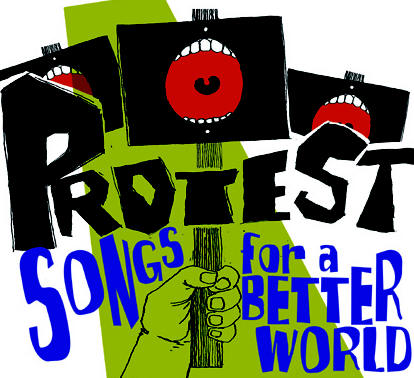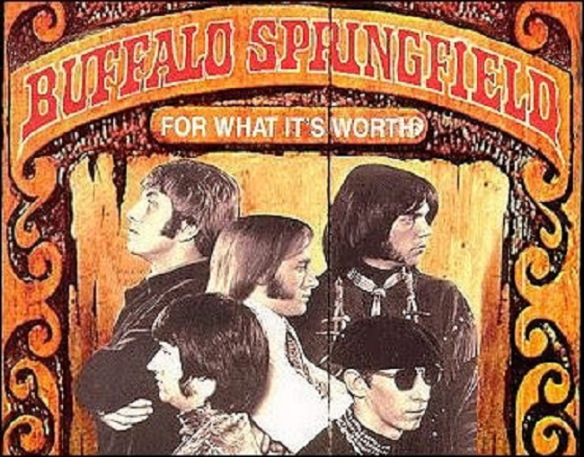Pay Attention to the Arts! If You Want to See Social Change!
- TLALOCO

- Aug 29, 2020
- 8 min read
Artists have always played a key role in social movements in the United States, addressing issues ranging from women's rights, civil rights, voting rights, labor rights, immigration, sexism and gun violence...to name a few.
There are three classical branches of visual art; painting, sculpture and architecture.
But Raza are more familiar with the other common arts; music, theater, film, dance, and literature.
Social movements for change are well known by historians and social scientists. Yet, rarely is there a discussion on the impact of the ARTS on those movements. From the early unionizing efforts in the 20's and 30's, racial justice protests to the civil rights movement of the 60's and War Protests that closely followed. Music, art and film captured the feelings, moods and social views of the community. Some for and some against but all depicted in the arts.
We will focus on protests songs that rallied against the status quo regarding social issues that today continue seemingly unabated, like racism, war, and sexism.
We acknowledge we ignored many songs of protest in the time period, so forgive us for identifying only a few key songs that became famous for their subject and lyrics. If ever there was a case, for the popular saying, "History often repeats itself..." These songs prove it! PuroChisme? No, es la verdad!
This is a first, in a three-part series of "SONGS OF PROTEST" posts, where we share some well known and not so well known, musical artists who sang renditions about race, class, addiction, and indifference in our society over the years.
When possible, we will try to distinguish, by decades, the songs that resonated in this nation and beyond that influenced cultural and political change.
We chose popular songs that had a social justice message during the time it was written.
Songs that became part of the fabric of music history aqui en los Estados Unidos.
Here is our chronology of SONGS OF PROTEST 1939 to 1970
STRANGE FRUIT - 1939 Written as a poem, in 1937 by Abel Meeropol, a White, Jewish teacher and member of the American Communist Party. The song recorded by Billie Holiday in 1939, exposes the sheer brutality of racism in the United States at that time, by way of a stark, powerful description of a postcard Meeropol had seen depicting a lynching amid an idyllic, florid scene of the southern landscape with descriptions of black bodies swaying from a tree. His words were blunt and had the desired effect of shocking and appalling listeners.
Southern trees bear a strange fruit Blood on the leaves and blood at the root Black bodies swingin' in the Southern breeze Strange fruit hangin' from the poplar trees
Pastoral scene of the gallant South The bulgin' eyes and the twisted mouth Scent of magnolias sweet and fresh Then the sudden smell of burnin' flesh
Here is a fruit for the crows to pluck For the rain to gather For the wind to suck For the sun to rot For the tree to drop Here is a strange and bitter crop
IF I HAD A HAMMER– 1949 A folk song written by Pete Seeger and Lee Hays.
It gives praise for many progressive concerns of the day and most specifically the Labor Movement.
The song features vocal images of blue-collar workers (hammers and bells to suggest factories, etc.) as a rallying song for justice and equality.
I got a hammer
And I've got a bell
And I've got a song to sing
All over this land
It's the hammer of justice
It's the bell of freedom
It's the song about love between
My brothers and my sisters
All over this land
BLOWING IN THE WIND– 1963 a song written by Bob Dylan in 1962 and released as a single and on his album The Freewheelin' Bob Dylan in 1963.
It has been described as a protest song, and poses a series of rhetorical questions about peace, war, and freedom.
Dylan, commented about "the answer" when the song was published in Sing Out! "...Too many of these hip people are telling me where the answer is, but oh I won't believe that. I still say it's in the wind and just like a restless piece of paper it's got to come down some ... But the only trouble is that no one picks up the answer when it comes down, so not too many people get to see and know ... and then it flies away...I'm only 21 years old and I know that there's been too many wars ..." In Dylan's view, the refrain "The answer, my friend, is blowin' in the wind" is purposely vague," either the answer is right in front of your face, or the answer is as imperceptible...as the wind.
Yes, 'n' how many years can a mountain exist Before it is washed to the sea? Yes, 'n' how many years can some people exist Before they're allowed to be free? Yes, 'n' how many times can a man turn his head And pretend that he just doesn't see? The answer, my friend, is blowin' in the wind The answer is blowin' in the wind
THE SOUND OF SILENCE – 1964 A ballad by Simon & Garfunkel and covered by heavy-metal rock, Disturbed in 2015. Simon said the song was about, "the inability of people to communicate with each other, not particularly internationally but especially emotionally, so what you see around you are people unable to love each other.” The song likely meant to represent a numbness of humanity as a whole. In Simon's view, people's actions are void of significance, they seem dis-empowered and alienated.
Disturbed's heavy-metal version is a darker and more intense version of the same lyrics. What many listener’s claim, is Disturbed's powerful call, to pay attention to what is happening around them today. Their version feels like a call to take action! Paul Simon called Disturbed's version a "wonderful rendition."
And the people bowed and prayed
To the neon god they made
And the sign flashed out its warning
In the words that it was forming
And the sign said,
"The words of the prophets
Are written on the subway walls
And tenement halls
And whispered in the sounds of silence."
MISSISSIPPI GODDAMN - 1964 A song written and performed by American singer and pianist Nina Simone.
The song is indicative of the political turn her recorded music took during this period. Simone composed "Mississippi Goddam" in less than an hour.
The song captures Simone's response to the murder of Medgar Evers in Mississippi; and the 16th Street Baptist Church bombing in Birmingham, Alabama, killing four black children.
In 2019, "Mississippi Goddam" was selected by the Library of Congress for preservation in the National Recording Registry for being "culturally, historically, or aesthetically significant".
...Oh but this whole country is full of lies You're all gonna die and die like flies I don't trust you any more You keep on saying 'Go slow!' 'Go slow!'
But that's just the trouble 'Do it slow' Desegregation 'Do it slow' Mass participation 'Do it slow' Reunification 'Do it slow' Do things gradually 'Do it slow' But bring more tragedy 'Do it slow' Why don't you see it Why don't you feel it, I don't know I don't know
EVE OF DESTRUCTION - 1965 a protest song written by P. F. Sloan in mid-1964. The best-known recording was by Barry McGuire.
The song tackles racism, hypocrisy and injustice.
It was so vilified by the conservative establishment, the song was banned on radio, which undoubtedly made it all the more appealing to the young.
The youth in America helped drive the song straight to No.1 even as the war in Vietnam continued to escalate.
Think of all the hate there is in Red China! Then take a look around to Selma, Alabama! Ah, you may leave here, for four days in space, But when your return, it's the same old place, The poundin' of the drums, the pride and disgrace, You can bury your dead, but don't leave a trace, Hate your next door neighbor, but don't forget to say grace, And you tell me over and over and over and over again my friend, You don't believe we're on the eve of destruction.
FOR WHAT IT'S WORTH – 1966 A song written by Stephen Stills and performed by American Rock band, Buffalo Springfield (whose members included, Steven Stills, Neil Young, Richie Furay, and Dewey Martin).
While it's often recognized as an anti-war protest anthem, the song wasn't actually based on protests against Vietnam.
Stills, wrote the song, in response to a protest that had turned into a riot following the closing of a nightclub called Pandora's Box on the Sunset Strip, in Los Angeles, California. As the civil rights era grew, the songs lyrics came to have greater social protest meanings.
There's battle lines being drawn
Nobody's right if everybody's wrong
Young people speaking their minds
Getting so much resistance from behind
It's time we stop, hey, what's that sound
Everybody look what's going down
RISING SOULS – circa 1968 Written by Ramon "Chunky" Sánchez, Ricardo Sanchez, Don "El Guero" Knapp and Miguel Lopez.
Performed by Los Alacranes Mojados of San Diego, California. They created songs and performed for farm worker rights and the Chicano Movement.
The Rising Souls song, recognizes the value of our youth and called for education over incarceration and the end of gang violence.
Well it's time to shine the light on the young souls of the earth
Let it shine and illuminate, the beauty of their worth
I said it's time to shine the light on the young souls of the earth
Let it shine and illuminate, the beauty of their worth
We gotta educate, not incarcerate
So that humanity will shine
Educate, not incarcerate
So that humanity will shine
Vamos mis amigos, let's try some brotherhood
No need to kill another over a neighborhood
FORTUNATE SON - 1969 This song, written by John Fogerty and performed by American Rock Band, Credence Clearwater Revival.
It soon became an anti-war movement anthem, a symbol of the counter culture's opposition to U.S. military involvement in the Vietnam War and solidarity with the soldiers fighting it.
The song has been prominently featured in depictions of the Vietnam War and the anti-war movement.
Rolling Stone placed it at number 99 on its "500 Greatest Songs of All Time" list. In 2013, the song was added to the National Recording Registry by the Library of Congress for being "culturally, historically, or aesthetically significant."
Some folks inherit star spangled eyes Ooh, they send you down to war, Lord And when you ask them, "How much should we give?" Ooh, they only answer "More! More! More!" yoh
It ain't me, it ain't me, I ain't no military son, son It ain't me, it ain't me, I ain't no fortunate one, one
SUGAR MAN - 1970 A ballad written by Sixto Rodriquez, an American born singer-songwriter from Detroit, Michigan.
His father had immigrated to the United States from Mexico in the 1920s; his mother was also from Mexico. They had joined a large influx of Mexicans who came to the Midwest to work in Detroit's industries.
Sugar Man, is a very bleak tale about being in the throes of addiction. Rodriquez, depicts the "Sugar Man," as a false friend, a drug dealer, who will turn your heart dead. This slow bluesy rock song seems to glorify the drug dealer and drug addiction, however, Rodriguez, in a TV interview in March 1998, said the song is "descriptive not prescriptive."
He was compared to contemporaries such as Bob Dylan and Cat Stevens but failed to gain any notoriety in the United States. Unbeknownst to Rodriquez, his albums became very successful and influential in South Africa over succeeding generations. He has been quoted as saying, "I love my country, but I don't trust the government."
Some of his songs served as anti-Apartheid anthems in South Africa, where his work influenced musicians protesting against the government. His work also found a large following in some other countries in Africa, and also in Australia and New Zealand.
Because information about him was scarce, it was rumored that he had committed suicide shortly after releasing his second album in 1971. In the 1990s, determined South African fans managed to find and contact Rodriguez, which led to an unexpected revival of his musical career.
His story was told in the 2012 Academy Award–winning documentary film Searching for Sugar Man and helped finally give Rodriguez a measure of fame in his home country.
Sugar man, won't you hurry Cause I'm tired of these scenes For a blue coin won't you bring back All those colors to my dreams
Silver magic ships you carry Jumpers, coke, sweet Mary Jane
Sugar man you're the answer That makes my questions disappear Sugar man cause I'm weary Of those double games l hear
Sugar man...
Did you enjoy this musical tour of the artist's and their signature songs of protest? Stay "tuned-in" for Part-2, of this series which takes a look at 1970 to 2010.
Excerpt from:

























Love this! A cool playlist to put on while you plan community action near you!